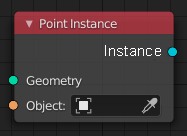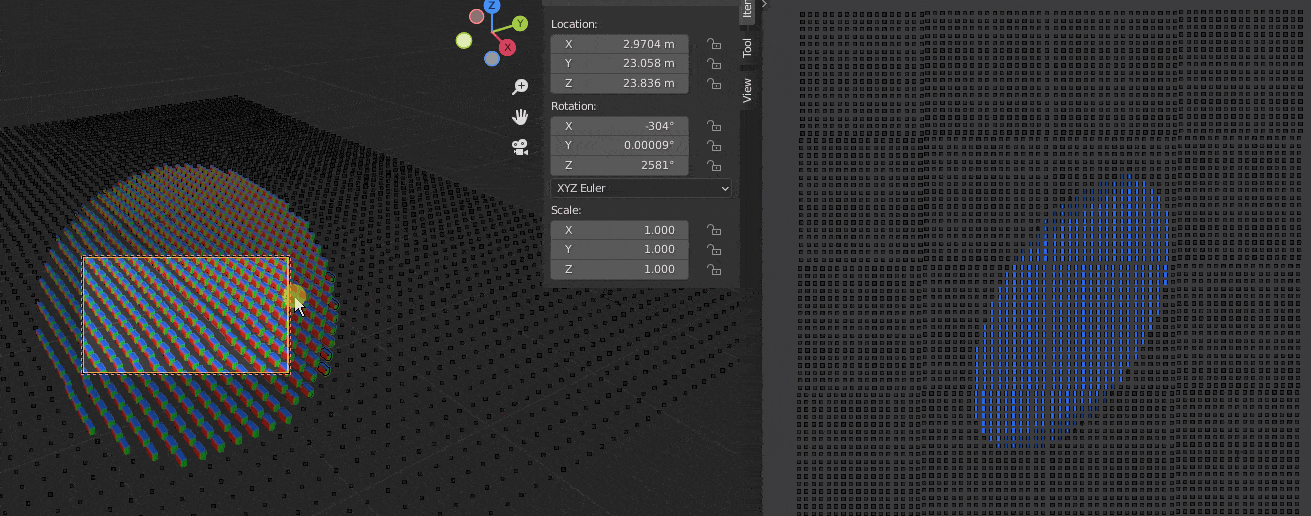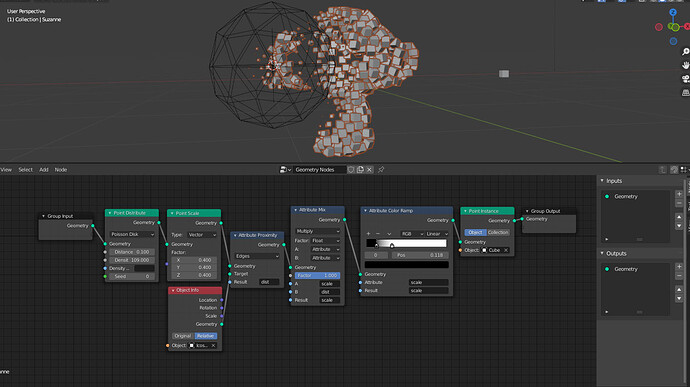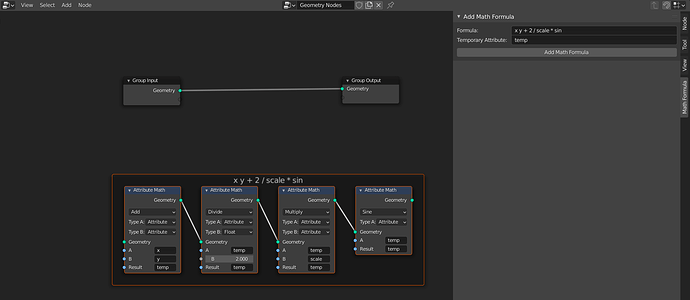I don’t think that there is sense of determining radius by vector. What has sence is to be able to scale each sphere of volume separately. Looks like points to volume node unlike Point instance node can’t scale volume objects what probably would have had sense. What I see you can do for now is to scale down points after volume node and scale up before one. This trick should do what you trying to achieve.
@HooglyBoogly hi ! I saw https://developer.blender.org/D10305 and wondered how are vec2 mapped to vec3 ? by leaving last singlet empty ? any plans to allow mixing/switching individual singlets, eg mapping UVs to position Y&Z or something else ? or is this already possible ?
Isn’t it worth to create separate socket for instanced geometry since it’s not represent exactly geometry?

The proximity node is welcome and veryusefull, but il lacks the volume options in addition to surface, edge and points.
Otherwise, you can’t get rid of the instances inside the spheres wich control the size easily.
I just wanted to quickly thank the developers for making such a generally useful system. Today I started working on a repeat project for a client where I previously had to use a much more complicated and cumbersome way to achieve this basic pop effect that can be temporally offset, and replicated lots of times. Now, bam there’s a simple node group that does it with 95% less clutter in the scene and much quicker adjustability!
It’s very nice that the keyframes on the modifier inputs are tied to the object and not the node group. That way I can have global animation inside the node group, and object level local animation in the modifier stack ![]()
edit: I know, don’t do serious work on experimental features, etc. I know what I’m doing, and I can fall back on the old method anytime ![]()
The Volume distribute points is much needed and awaited and with grid distribution option.
For now I do it in a hacky way.
I generate particles inside the object with grid and the particles are single vertex object.
I convert and join them, then I instance the vertices the get the same effect.
Proximity seems to work with objects but not with instances, did I miss something ? I mean if you plug the result of point instance into the target socket of attribute proximity, it generates an attribute that’s 1.0 everywhere. I mean it’s red everywhere but obviously I can’t inspect it for lack of a spreadsheet, so I assume it’s 1.0
In the Object info of the influencer, did you select Relative not Original?
Completely, Volume Proximity is much much much more useful thank all the 3 option combined
How did you do to scatter within a volume?
I added a particle system to object that i want to fill, with the option generating the particles from volume, with grid distribution. The particles are simple single vertex object.
then I convert the particles to objects, so I have thousands of single vertex objects, that I join.
Finally I add geometry node to this object and I instance what you want on vertices, in my case, little cube.
From this point you can do what you want with the instances, , like controling their size with proximity node…

Just comparing 3D direction seems to work fine? file available here
But that’s not a true frustrum ![]()
Who can do better?
I have no idea what this is, I’ll have to check but I probably left it at default.
Hi guys, what’s the way of doing third, fourth, fifth etc… root of a number with math nodes?
I’d need to control the exponent with a variable. Thank you in advance?
There is a power mode in the math nodes (though I’m not sure about the root)
Yeah sorry I haven’t realized that power mode has the exponent variable, I need exponent for the root.
So I didn’t use object info node at all, just a point instance node.
Can you guys help me figure out what is wrong with this setup ?
Here’s my blend file with two different setups, the one from the screenshot and another one using point separate, neither of them work.
https://pasteall.org/blend/f321e72551bf4b689574ea0d48111a75
To the power of 1/2 is square root, 1/3 is cube root, 1/n is nth root
I made a little add-on to quickly add multiple attribute math nodes in sequence. Hopefully this won’t be needed anymore when we have a script node.
You have to type the formula in reverse polish / postfix notation.
This means (x+y) / 2 → x y + 2 / (this is how you would do it with nodes)
Example:
You can find the add-on here:
https://github.com/WannesMalfait/Blender-Add-ons/blob/master/math_formula.py
Feel free to contribute or leave feedback
Indeed ![]() , thanks mate!
, thanks mate!



